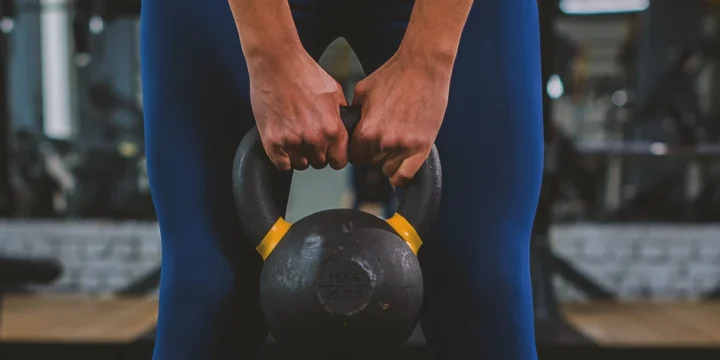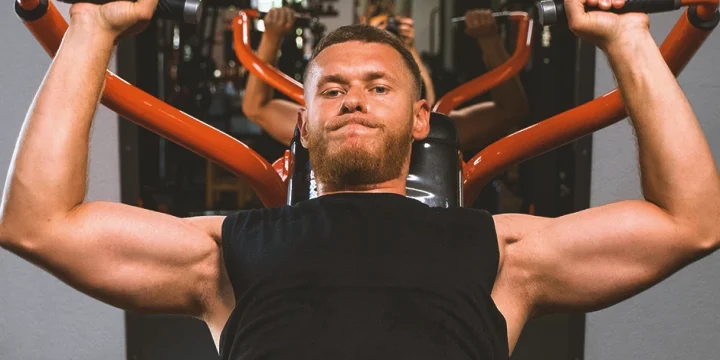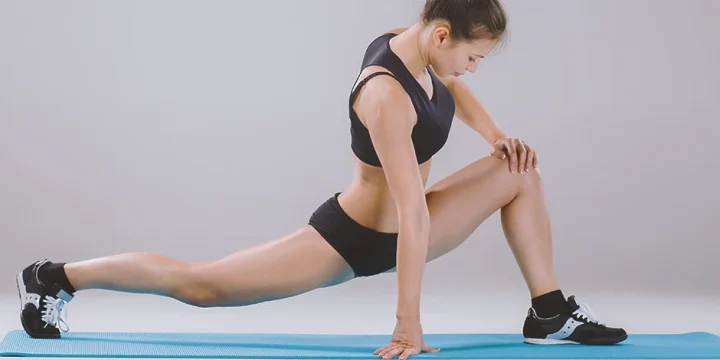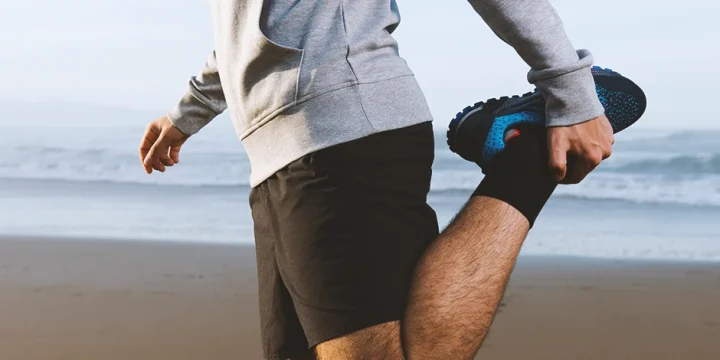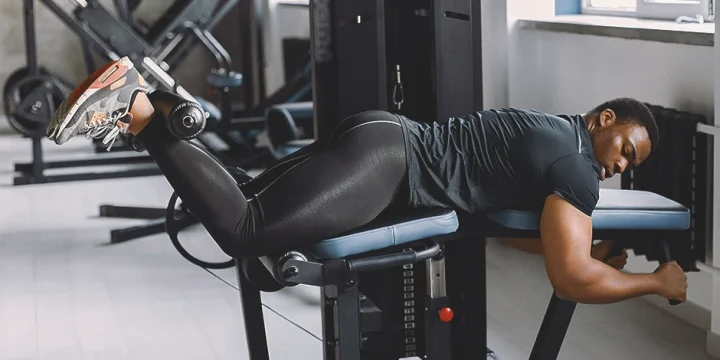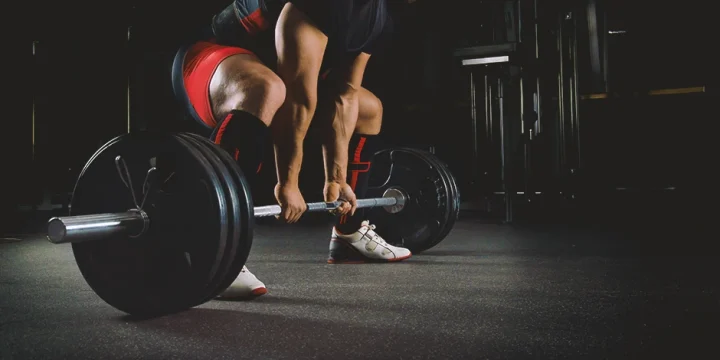Building your quadriceps muscles with a barbell can become inefficient at some point, and you must introduce different leg exercises and squat variations to keep progressing.
Dumbbell exercises are an excellent place to start and add variety to your leg workouts to build muscle and strength.
Based on my experience and 30-hour research, I singled out the best dumbbell quad workouts according to the criteria of muscle growth and increasing strength.
After reading the article, you will know the best dumbbell leg workouts to include in your routine and the exact number of reps, sets, and rest intervals you must perform to get the best results.
Quick Summary
- The best dumbbell quadriceps exercises include goblet squats, dumbbell sumo squats, dumbbell forward lunges, walking dumbbell lunges, dumbbell split squats, dumbbell front squats, sissy squats, side lunges, and more.
- The only way to make substantial progress regarding strength and muscle growth is to incorporate proper programming, periodization, and the principle of progressive overload.
- According to the National Institute of Health, the principle of progressive overload, which involves increasing workout intensity, is crucial for achieving the greatest hypertrophy.
- In my view, dumbbell quad exercises offer a versatile and effective way to target the quadriceps, making them a valuable addition to any strength training regimen for both beginners and advanced athletes.
10 Best Dumbbell Quad Exercises

To get the most out of dumbbell, kettlebell, or barbell workouts, you must incorporate the principle of progressive overload, which, according to the National Institute of Health (NIH), is increasing the intensity each following workout [1].
Also, according to NIH, progressive overload is the best for developing the most significant hypertrophy possible [2].
That said, you must look for the signs of burnout and avoid it at all costs, since, as noted by NIH, it is closely linked to overtraining syndrome [3].
If you combine these three principles, you will get the most out of your dumbbell workouts.
"There are a handful of reasons why a lifter may choose dumbbells over other free weights. Limited resources, insufficient space, and the need for versatility make dumbbells a popular implement for home gyms."
- Andrew Coates, Certified Personal Trainer
1. Goblet Squat
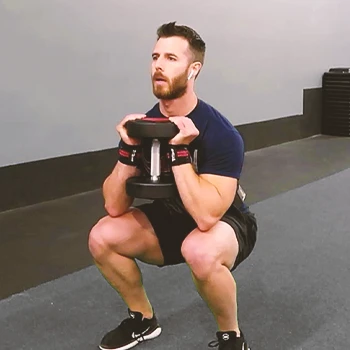
Goblet squats are among the best dumbbell squat variations to effectively build your quad muscles, glutes, and hamstrings.
How to Perform a Goblet Squat
- Pick a dumbbell of the appropriate weight to perform at least 10 reps without resting.
- Assume a standing position, feet shoulder-width apart or a little wider, and slightly turn your toes outward. Place them in a goblet position at the level of your shoulders.
- When doing goblet squats, ensure your knees always follow the projection of your toes to avoid caving in problems and potential injuries.
- Start the exercise by slowly lowering your body towards the floor by bending the hips, knees, and ankles.
- Hold that position for one second when your inner thighs reach the parallel position with the floor.
- Reverse the motion to return to the starting position where your back is flat and torso upright.
- Repeat for 12 reps, 4 sets, and rest for 3 minutes between the sets.
Related Article: Crush Grip Goblet Squat
2. Dumbbell Sumo Deadlift/Squat
Depending on your morphology, Dumbbell sumo squats or deadlifts are the best variations that will effectively target anterior and posterior chain lower body muscles.
How to Perform Dumbbell Sumo Deadlifts
- Pick a dumbbell of appropriate weight to perform up to 10 consecutive reps without resting.
- Assume a standing position wider than shoulder-width apart and let the dumbbell hang from your hands in between your legs.
- Start the exercise by simultaneously lowering the dumbbell towards the floor by bending your torso and knees.
- Hold that position for one second when your thighs become parallel to the ground.
- Reverse the motion by extending your ankles, knees, and hips to return to the starting position.
- Repeat for 10 reps, 4 sets, and rest for 3 minutes between each set.
3. Plie’ Dumbbell Squats
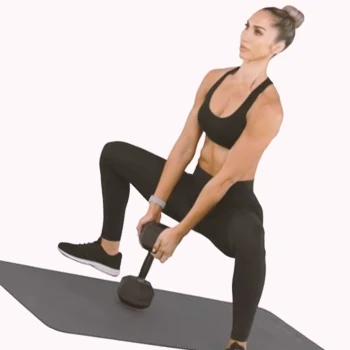
As a trainer, I find that plié dumbbell squats, while similar to sumo squats, involve a slightly wider stance, engaging your adductors more during both the descending and ascending phases of the exercise.
How to Perform Plie’ Dumbbell Squats
- Pick a dumbbell of appropriate weight so you can perform at least 10 consecutive reps without a pause.
- Assume a wide stance with your feet. The stance should be wider than the sumo squat described earlier.
- Let the dumbbell hang from your hands. Your elbows should be fully extended.
- Start the exercise by descending in the deep squat position by bending your hips, knees, and ankles simultaneously.
- When your thighs reach the parallel position to the ground, hold that position for one second.
- Reverse the motion by performing the triple extension with your ankles, knees, and hips to return to the starting position.
- Repeat for 10 reps, 3 sets, and rest for 2 minutes between the sets.
4. Dumbbell Forward Lunges
Dumbbell forward lunges are performed in the place, representing an easier variation of the walking dumbbell lunges.
How to Perform Dumbbell Forward Lunges
- Pick two dumbbells of appropriate weight so you can perform 6 reps with each leg without resting.
- Assume a shoulder-width apart stance and let the dumbbells hang from your hands near your body like in the anatomical position.
- Start the exercise by lunging forward with your right leg until your left knee almost touches the ground.
- Push through your right leg backward so you return to the starting position.
- Repeat the same with your left leg.
- Perform 6 reps, 4 sets, and rest for 2 minutes between the sets.
5. Walking Dumbbell Lunges
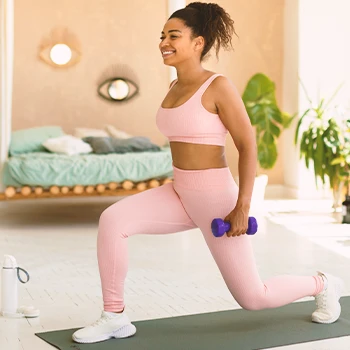
I find walking dumbbell lunges to be a challenging lower body exercise because the adductors must actively work as dynamic stabilizers to maintain balance throughout the movement.
How to Perform Walking Dumbbell Lunges
- Pick two dumbbells of appropriate weight so you can perform 8 lunges with each leg without a pause.
- Assume a shoulder-width apart stance and let the dumbbells hang on the sides of your body.
- Start the exercise by lunging forward with your right leg until your left knee almost touches the floor.
- Quickly alternate between the legs and push the left leg forward, repeating the above mentioned movement.
- Perform 8 reps with each leg, 3 sets, and rest for as much as needed between the sets.
6. Dumbbell Split Squat (With Front Leg Raised)
Dumbbell split squats are effective for building stability and lower body unilateral strength.
How to Perform Dumbbell Split Squats
- Pick two dumbbells of appropriate weight so you can perform 8 split squats with each leg without resting.
- Assume a split stance and hold the dumbbells on the sides of your body with your elbows fully extended.
- Start the exercise by lowering your body towards the floor until your back knees reach the ground level.
- Reverse the motion to return to the starting position. When you finish 8 reps, switch the working leg.
- Repeat for 8 reps, 4 sets, and rest for 90 seconds between the sets.
7. Dumbbell Bulgarian Split Squat
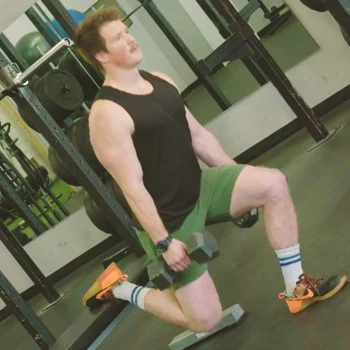
Bulgarian split squats are the harder split squat variation to effectively build your hamstrings, quads, and glutes.
How to Perform Dumbbell Bulgarian Split Squats
- Pick two dumbbells of appropriate weight so you can perform 6 reps without pausing.
- Place your back foot on an elevated surface, such as a flat bench or a plyo box.
- Start the exercise by initiating the descending phase until your front leg’s thigh becomes parallel to the ground.
- Reverse the motion by extending your front knee and hips to return to the starting position.
- Repeat for 6 reps, 3 sets, and rest for 3 minutes between the sets.
8. Dumbbell Front Squats
In my experience as a personal trainer, I've observed that dumbbell front squats effectively target my clients' quads because their center of mass shifts forward, placing more stress on the knees.
How to Perform Dumbbell Front Squats
- Pick two dumbbells of appropriate weight so you can perform at least 8 front squats without resting.
- Place the dumbbells in a front squat position at the level of your shoulders.
- Start the exercise by lowering your body while keeping your lumbar spine flat so you avoid injury.
- Hold that position for one second when your thighs become parallel to the ground and reach the bottom squat position.
- Reverse the motion to return to the starting position.
- Repeat for 8 reps, 4 sets, and rest for 3 minutes between the sets.
9. Sissy Dumbbell Squat
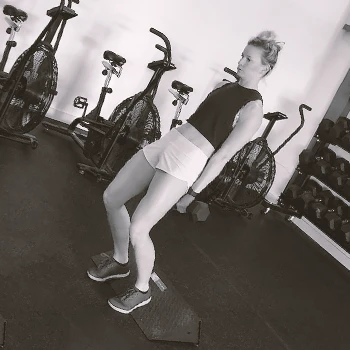
Diddy dumbbell squats may be the most effective exercise for targeting the lower fibers of your knees, the ones close to the knee joint.
How to Perform Sissy Dumbbell Squats
- Pick one dumbbell of appropriate weight so you can perform at least 6 consecutive reps.
- Assume a sissy squat position with your knees forward and torso leaning backward.
- Start the exercise by lowering into the squat position until your thighs parallel the ground.
- Reverse the motion to return to the starting position.
- Repeat for 6 reps, 4 sets, and rest for 2 minutes between the sets.
10. Dumbbell Side Lunges
Dumbbell side lunges are excellent for building strength in the frontal plane and challenging those adductors.
How to Perform Dumbbell Side Lunges
- Pick two dumbbells of appropriate weight and assume a shoulder-width apart stance.
- Start the exercise by lunging on the right side until your right thigh is parallel to the ground.
- Return to the starting position and repeat with the left leg.
- Complete 6 lunges on each side. Perform 3 sets and rest for 2 minutes in between.
Benefits of Performing Quad Exercises
- Enhanced lower body strength: Quad exercises significantly boost lower body strength, essential for daily activities like walking, climbing stairs, and lifting objects, thereby improving overall functional fitness and reducing the risk of lower body injuries.
- Improved athletic performance: Strong quads are crucial for athletes, enhancing speed, agility, and jumping ability. Regular quad exercises contribute to better performance in sports like soccer, basketball, and track events, where lower body strength is a key factor.
- Better knee stability: Quad exercises strengthen the muscles around the knee, providing better support and stability. This is particularly beneficial for individuals recovering from knee injuries or looking to prevent knee problems, as strong quads can alleviate pressure on the knee joint.
- Enhanced balance and posture: Strong quadriceps contribute to better balance and posture. By supporting the alignment of the knee and hip joints, quad exercises help maintain proper body mechanics, which is vital for preventing falls and maintaining a healthy posture.
- Weight management and muscle tone: Regular quad exercises can aid in weight management by increasing muscle mass, which in turn boosts metabolism. Additionally, these exercises help in toning and defining the thigh muscles, contributing to a more sculpted and athletic appearance.
FAQs
Can You Build Quads With Dumbbells?
Yes, you can build quads with dumbbells. Dumbbell exercises such as a dumbbell lunge, dumbbell front squat, dumbbell step-up, and similar are excellent for a dumbbell quad workout and building leg muscles.
How Do You Increase Quad Strength With Dumbbells?
To increase quad strength with dumbbells, you must incorporate the principle of progressive overload in your dumbbell quad workout. This means progressively growing the reps, sets, external resistance, or total training volume each following dumbbell quad workout.
Do You Need Heavy Weights to Build Quads?
You need heavy weights to build quads. However, you only need about 60-87.5% of your one rep max to build a rectus femoris and the other three quad muscles.
References:
- https://www.ncbi.nlm.nih.gov/pmc/articles/PMC4215195/
- https://www.ncbi.nlm.nih.gov/pmc/articles/PMC6950543/
- https://www.ncbi.nlm.nih.gov/pmc/articles/PMC3435910/
About The Author
You May Also Like
